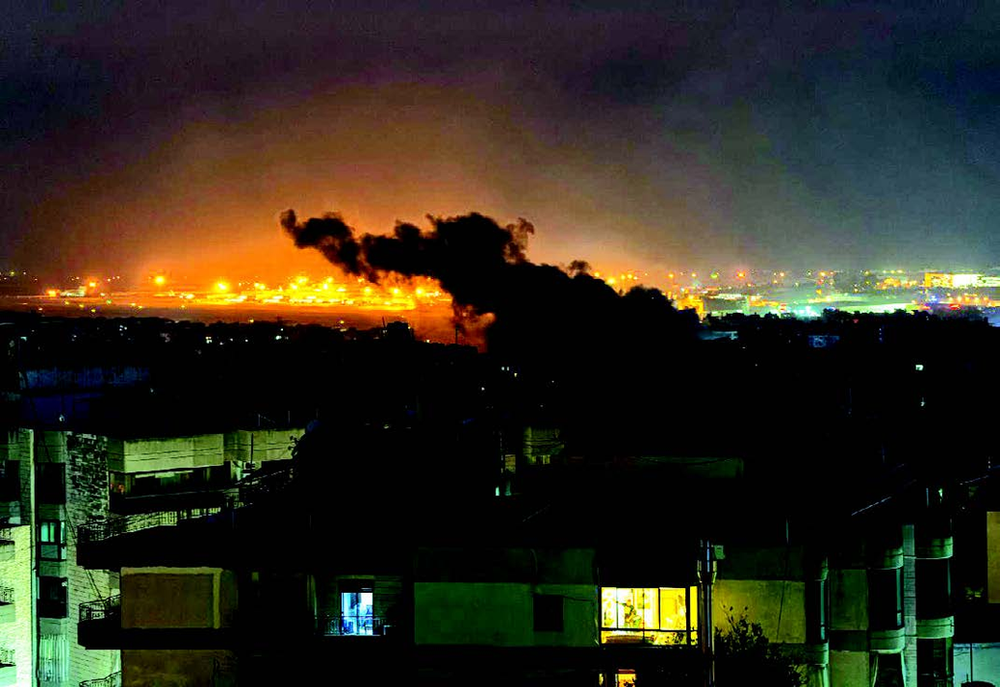
By Liam Stack and Matthew Mpoke Bigg
On Thursday, the Israeli military announced it had targeted a multitude of locations throughout northern and southern Lebanon overnight, as part of its escalating operations against Hezbollah, a bombardment that Lebanese authorities claimed resulted in numerous fatalities.
Initially, Israel’s offensive was concentrated in southern Lebanon, aiming to diminish Hezbollah’s capacity to launch rockets into Israeli territory. However, military actions have broadened recently to encompass cities and areas across the nation, including regions distant from the border.
The Israeli military reported that Hezbollah had fired over 40 “projectiles” into Israel on Thursday. During confrontations in northern Lebanon, one Israeli soldier lost his life, where military initiatives have intensified over the past week.
According to the Lebanese Health Ministry, airstrikes in and around the ancient city of Baalbek, located in northeastern Lebanon, resulted in 52 fatalities on Wednesday, although it remains unclear how many were affiliated with Hezbollah.
Israel’s forces stated they had targeted 20 locations in the vicinity of Baalbek. They did not refer to Sidon, a southern coastal city where Lebanon’s Health Ministry reported a strike on Thursday that claimed at least three lives. The United Nations peacekeeping contingent in southern Lebanon, known as UNIFIL, also indicated that five of its peacekeepers were “lightly injured” due to a drone strike near Sidon on the same day.
Before Israel intensified its aerial bombardment in late September and commenced a ground offensive aimed at incapacitating Hezbollah, Baalbek, celebrated for its Roman ruins, had a population of approximately 80,000 residents.
Bachir Khodr, the governor of Baalbek, mentioned on Wednesday that Israeli strikes had come closer to the town’s ancient structures compared to prior attacks, with a missile landing in a parking lot and damaging the historic district. He noted that the ruins have yet to be thoroughly assessed for damage. On Thursday, Khodr shared a picture illustrating the affected area adjacent to the ruins.
The ruins received designation as a protected World Heritage Site by the United Nations in 1984. Last week, the U.N. agency responsible for cultural site designations stated it was “monitoring the impact of the ongoing conflict on Lebanese cultural heritage” and collaborating with Lebanon’s antiquities authority on preservation initiatives.
Although the city, located near the Syrian border in the Bekaa Valley, was largely unharmed during the initial phases of the military campaign, warnings from the Israeli military in late October led a significant part of the population to evacuate. Since then, Israeli strikes on Baalbek have become a regular occurrence.
The Israeli military further declared it had targeted Hezbollah “command centers and terrorist infrastructure locations” near Beirut overnight. Local residents reported hearing at least four significant airstrikes in proximity to the Lebanese capital, with smoke billowing over Dahiya, an area under Hezbollah’s influence, south of Beirut.
One strike occurred so close to Beirut’s international airport that debris reportedly landed on a runway, according to local media. Lebanon’s transport minister, Ali Hamieh, stated on Thursday that airport operations were proceeding as usual.
Since October 2023, over 3,100 individuals have lost their lives in Lebanon, primarily during the heightened weeks of Israel’s offensive against Hezbollah. More than 1.2 million people—approximately one-fifth of the nation’s populace—have fled their homes, according to the Lebanese government.
As the conflict in Lebanon escalates, Israel’s military has been implementing a renewed offensive against Hamas in the northern Gaza Strip. On Thursday, it reported that ground operations were expanding to encompass Beit Lahia, an agricultural region along the Israeli border that has suffered numerous airstrikes.
Ground operations are also persisting in Jabalia, a large community that has been the focal point of the northern offensive.
The United Nations has issued warnings about a humanitarian disaster threatening hundreds of thousands of individuals caught in the fighting in the north. The Palestinian Civil Defense, an emergency rescue organization, reported on Thursday that it had been unable to conduct operations in the north for the past 16 days due to ongoing hostilities.
The Gaza Health Ministry noted on Thursday that Israeli military actions had resulted in at least 78 deaths in Gaza over the last two days.
Here’s what else is unfolding in the Middle East:
— Polio vaccinations: The United Nations stated it had completed the second round of its polio vaccination initiative in Gaza on Wednesday. The second dose was administered to over 556,774 children under the age of 10, achieving about 94% of the campaign’s target, according to the United Nations. They described the vaccination rates as “a remarkable achievement given the severely challenging circumstances” created by the conflict.
— Medical evacuations: The World Health Organization announced on Thursday that it had executed the largest medical evacuation from Gaza since the onset of the conflict, transporting 229 patients along with their escorts to Romania and the United Arab Emirates for medical treatment. The evacuees, who departed Gaza on Wednesday, included 38 children and 52 adults, among whom were 37 cancer patients.
— Israeli deportations: On Wednesday, Israel’s parliament enacted a law permitting the deportation of parents, children, and spouses of convicted terrorists if they are believed to have prior knowledge of an attack without disclosing it to authorities. This law empowers the interior minister to deport such relatives to Gaza or another “designated location.” Seen by many as targeting Israel’s Palestinian minority, the law faced condemnation as discriminatory from Rawhi Fattouh, a Palestinian leader in the West Bank.
